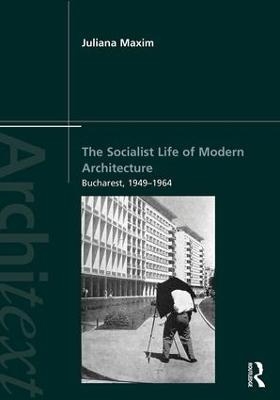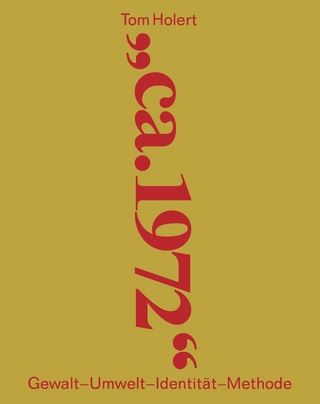
The Socialist Life of Modern Architecture
Bucharest, 1949-1964
Seiten
2018
Routledge (Verlag)
978-1-138-82035-7 (ISBN)
Routledge (Verlag)
978-1-138-82035-7 (ISBN)
This book examines the mechanisms through which modern Soviet architecture was invested with political meaning and, in reverse, how specific architectural solutions came to define city life and the socialist experience.
The Socialist Life of Modern Architecture is the first systematic architectural history of Romania under socialism written in English. It examines the mechanisms through which modern architecture was invested with political meaning and, in reverse, how specific architectural solutions came to define the socialist experience.
Each of the book’s three parts traces the historical development of one key aspect of Romania’s architectural culture between the years 1949–1964:
the planning and construction of housing districts in Bucharest;
the role of typification of design and standardization of construction in a project of cultural transformation;
the production and management of a folk architectural tradition.
Going beyond buildings and architects to consider the use of photography, painting, and novels, as well as narrations of history and the formation of an ethnographic architectural heritage, the author explores how buildings came to participate in the cultural imagination of socialism—and became, in fact, a privileged medium of socialism.
Part of the growing interest in the significance of Soviet Bloc architecture, this is an important contribution to the fields of architectural history, cultural history, and visual culture.
The Socialist Life of Modern Architecture is the first systematic architectural history of Romania under socialism written in English. It examines the mechanisms through which modern architecture was invested with political meaning and, in reverse, how specific architectural solutions came to define the socialist experience.
Each of the book’s three parts traces the historical development of one key aspect of Romania’s architectural culture between the years 1949–1964:
the planning and construction of housing districts in Bucharest;
the role of typification of design and standardization of construction in a project of cultural transformation;
the production and management of a folk architectural tradition.
Going beyond buildings and architects to consider the use of photography, painting, and novels, as well as narrations of history and the formation of an ethnographic architectural heritage, the author explores how buildings came to participate in the cultural imagination of socialism—and became, in fact, a privileged medium of socialism.
Part of the growing interest in the significance of Soviet Bloc architecture, this is an important contribution to the fields of architectural history, cultural history, and visual culture.
Juliana Maxim is Associate Professor of Architectural History at the University of San Diego, USA.
Introduction Part 1: The Rise of the Socialist City Part 2: Type and Typification Part 3: Peasant Houses and Workers’ Apartments Index
| Erscheinungsdatum | 25.05.2016 |
|---|---|
| Reihe/Serie | Architext |
| Zusatzinfo | 33 Line drawings, black and white; 53 Halftones, black and white; 86 Illustrations, black and white |
| Verlagsort | London |
| Sprache | englisch |
| Maße | 174 x 246 mm |
| Gewicht | 385 g |
| Themenwelt | Geschichte ► Allgemeine Geschichte ► Zeitgeschichte |
| Geschichte ► Teilgebiete der Geschichte ► Kulturgeschichte | |
| Naturwissenschaften ► Geowissenschaften ► Geografie / Kartografie | |
| Technik ► Architektur | |
| ISBN-10 | 1-138-82035-0 / 1138820350 |
| ISBN-13 | 978-1-138-82035-7 / 9781138820357 |
| Zustand | Neuware |
| Haben Sie eine Frage zum Produkt? |
Mehr entdecken
aus dem Bereich
aus dem Bereich
Gewalt, Umwelt, Identität, Methode
Buch | Softcover (2024)
Spector Books OHG (Verlag)
CHF 49,95


